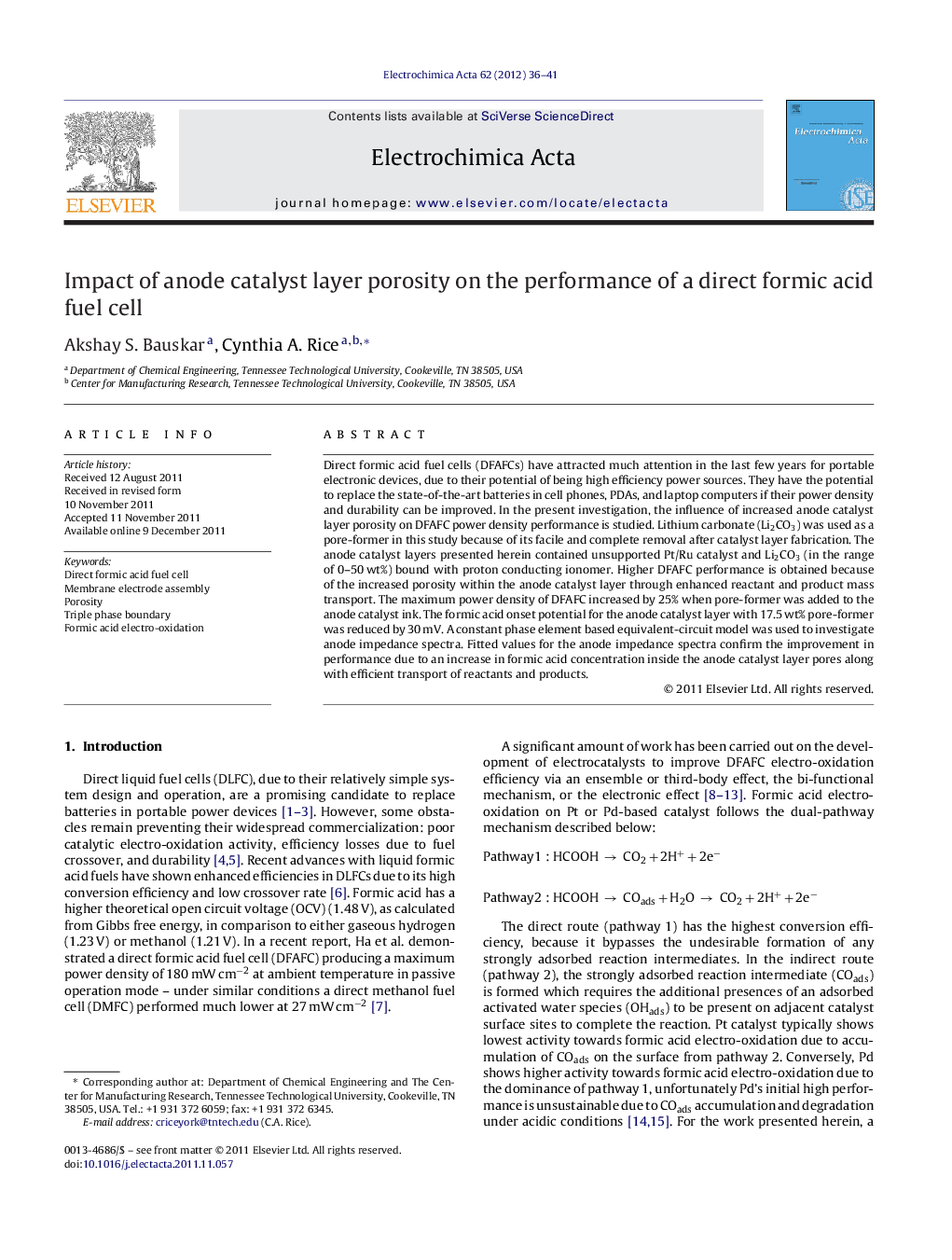| Article ID | Journal | Published Year | Pages | File Type |
|---|---|---|---|---|
| 189021 | Electrochimica Acta | 2012 | 6 Pages |
Direct formic acid fuel cells (DFAFCs) have attracted much attention in the last few years for portable electronic devices, due to their potential of being high efficiency power sources. They have the potential to replace the state-of-the-art batteries in cell phones, PDAs, and laptop computers if their power density and durability can be improved. In the present investigation, the influence of increased anode catalyst layer porosity on DFAFC power density performance is studied. Lithium carbonate (Li2CO3) was used as a pore-former in this study because of its facile and complete removal after catalyst layer fabrication. The anode catalyst layers presented herein contained unsupported Pt/Ru catalyst and Li2CO3 (in the range of 0–50 wt%) bound with proton conducting ionomer. Higher DFAFC performance is obtained because of the increased porosity within the anode catalyst layer through enhanced reactant and product mass transport. The maximum power density of DFAFC increased by 25% when pore-former was added to the anode catalyst ink. The formic acid onset potential for the anode catalyst layer with 17.5 wt% pore-former was reduced by 30 mV. A constant phase element based equivalent-circuit model was used to investigate anode impedance spectra. Fitted values for the anode impedance spectra confirm the improvement in performance due to an increase in formic acid concentration inside the anode catalyst layer pores along with efficient transport of reactants and products.
► Lithium carbonate is used as a pore-former to increase porosity of anode catalyst layer. ► Maximum power density increased by 25%. ► Onset potential for formic acid electro-oxidation reduced by 30 mV for anode catalyst layer with 17.5 wt% pore-former. ► Electrochemical impedance spectra confirm increased formic acid concentration inside the anode catalyst layer pores.
